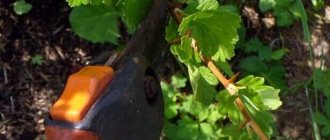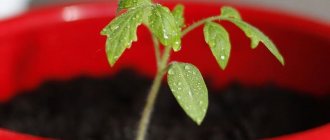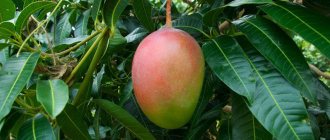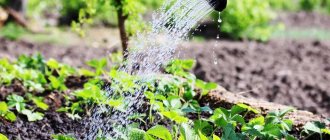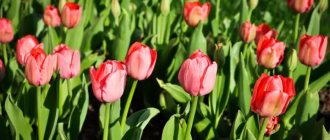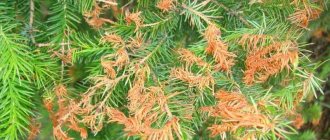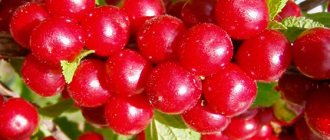A flowering plant such as hydrangea (Hydrangea) is directly related to the hydrangea family. According to various sources, this genus includes 30–80 species of hydrangeas. Such plants are represented by compact trees, vines and shrubs. Most types of hydrangeas grow in South and East Asia (China, Japan); this plant can also be found in North America and the Far East. This plant was named after the princess of the Holy Roman Empire. Taxonomists gave the plant the Latin name Hydrangea, which means “vessel of water.” The fact is that it is characterized by great moisture-loving properties. In Japan, this plant is called "ajisai", which means "purple sun flower". Despite the large number of species, only garden hydrangea or large-leaved hydrangea, which is small in size, is grown at home. Other species and varieties are grown exclusively in gardens.
Features of hydrangea
In the wild, hydrangea is represented by three-meter shrubs, not very large trees, as well as vines that can climb tree trunks to a height of thirty meters. Also, such hydrangeas can be deciduous or evergreen (depending on the type). In mid-latitudes, deciduous species are most preferred to grow. Most often, such a plant has oppositely arranged leaves of large size; they are oval in shape with a point at the top. The edge of the leaf blades is most often jagged, and veining is clearly visible on their surface. Hydrangea begins to bloom in the spring, and ends only after the onset of frost in the fall. The flowers are collected in large inflorescences, which can have a corymbose, spherical or paniculate shape. The inflorescences include 2 types of flowers. Some of them are small fertile (fertile), located, as a rule, in the middle part of the inflorescence, while others are large sterile (sterile), which are located along the edge of the inflorescence. There are species that have only one fertile flower. Most hydrangeas have white flowers. However, there are species, for example, large-leaved or large-leaved hydrangea, which can have flowers of various colors: cream, white, blue, pink, red and lilac. It is interesting that the exact color of the flower is influenced by the pH value of the soil. So, for example, if the substrate is neutral, then the flowers will be cream or beige, if alkaline, then pink or lilac, and if the substrate is acidic, blue, because the soil contains aluminum, which is easily absorbed by hydrangea. The fruit of this flower is a capsule with 2–5 chambers, which contains small seeds. It happens that a flower belonging to the close genus Schizophragma is mistakenly called hydrangea, but you should know that petiolate hydrangea is nothing more than a schizophragma.
Hydrangea: care, planting, pruning
Compatibility with other plants
But no matter how good hydrangea is on its own, it is usually grown together with other crops. Ferns are a logical addition to it. Together with them, the exotic guest will reveal all her depth and allow her to “play” in contrasts. You can create ensembles with heterogeneous elements and varied aesthetic content.
Quite often hostas are grown together with hydrangeas. The joint cultivation of hydrangeas with roses, other large flowers and skeletal crops is also practiced. Perennial crops are combined with hydrangeas both in flower beds and flower beds, and simply in plants planted in a group in the garden.
You can also plant ground cover plants designed for moist soil with hydrangeas. Among them are ivy and periwinkle. For greater variety, it is sometimes recommended to use tenacious and pachysandra. If there is an interest in low perennials, a soft cuff is the best choice. Its bright light greenery and the lushness of the cloud-like bush add a “shine” to plant compositions.
We recommend reading:
Midges in flower pots
Bergenia turns out to be a sharp and even unexpected “companion” of hydrangea. The leaves of this plant reach simply enormous sizes. The tenderness of its flowering will also be an attractive feature. This external combination is especially good in the fall.
You can also create a composition with hydrangeas using cereals. By combining these plants, a modern look is achieved in the garden space. The gaps between large flowers are filled:
- millet;
- miscanthus;
- reed phalaris;
- Hakonechloa.
Such a duet looks so attractive that it is impossible to take your eyes off it. But you can also consider ideas for compositions involving white-flowered crops. Astilbe adds splendor, anemones look vibrant, and physostegia create an unexpected effect. There is no need, however, to limit yourself to white. It is completely acceptable to use other shades and colors.
Lovers of blue compositions should use aconite. Other popular options that pair well with hydrangea include:
- Rogers;
- crocus;
- iris;
- day-lily;
- Volzhanka;
- euonymus;
- bush cinquefoil;
- boxwood
Growing hydrangea
How to properly grow hydrangea in the garden? Here are the basic rules:
- Large-leaved hydrangea can have different flower colors. Moreover, their color depends not on the variety, but on the pH of the soil. So, in acidic soil the flowers are blue and blue, in neutral soil they are white and beige, and in alkaline soil they are lilac or pink. In order for the bush to be spectacular and colorful, experienced gardeners advise changing the acidity separately for each flower.
- This flower loves moisture very much; therefore, it must be watered not only abundantly, but also on time.
- Direct sunlight is required. But it is worth considering that flowers can fade under the influence of the scorching rays of the midday sun. In this regard, you need to choose a place for planting where there is slight shading at noon.
- Also, the plant must be pruned on time.
- You cannot apply a lot of organic fertilizers, because flowers may not appear on overgrown bushes.
- Hydrangea must be well covered for wintering, even those species that are considered frost-resistant. If one of the bushes freezes, then in most cases it will be able to fully recover during a period of intensive growth.
- Very resistant to diseases and pests.
Possible problems
Chlorosis manifests itself in lightening of foliage
How to care for hydrangea if it loses its beautiful appearance? Despite its fastidious nature, the “Chinese beauty” is quite resistant to pests and diseases.
But some problems are possible:
- Chlorosis is expressed in the loss of color in the foliage: it loses its bright green color. The disease is associated with excess lime or humus in the soil. A solution of iron sulfate or potassium nitrate helps give the plant a healthy appearance. The bush is sprayed at intervals of 3 days.
- Downy mildew appears when there is excess air humidity. Initially, yellow spots appear on the foliage, which over time become dark brown. To combat the disease, use a solution of copper sulfate.
- Of the pests, aphids, spider mites and weevils pose a real danger. Aphids and spider mites feed on plant sap, causing a loss of turgor (elasticity) of cells. Weevils gnaw through flower buds and spoil the inflorescences. And this is the answer to the question why hydrangea does not bloom. In case of serious damage, the use of insecticides is necessary.
- Sometimes a fungus appears on hydrangeas. The phenomenon is rare, but possible. Copper oxychloride helps with it.
- The foliage is readily eaten by snails. They carefully remove the top layer of the leaf blade, leaving a transparent epidermis. When a clutch of snail eggs is detected, chemical baits are left in special containers under the bush.
Beautiful hydrangea in garden design
It is important to periodically inspect the plants so as not to miss signs of disease or pest infestation. With the right approach and treatment, hydrangea will gradually recover.
The video provides general information about hydrangea and its care:
Planting hydrangea
Growing from seeds
As a rule, it is very easy to propagate species of hydrangeas by seeds. Also, this method of reproduction is often used by breeders in their work. Growing such a flower from a seed is quite easy, but it is a time-consuming method. Seeds need to be sown in autumn. To do this, you need to fill the container with a loose soil mixture rich in nutrients, which can be prepared by combining peat and leaf soil with river sand in a ratio of 2:4:1. Seeds sown on the surface of the substrate should be sprinkled with a thin layer of soil and then watered with a spray bottle. Then the container must be covered on top with a transparent film or glass, and the cover must be removed several times to ventilate the soil. It should also be taken into account that the soil should be slightly moist all the time. The optimal temperature is from 14 to 20 degrees. After the first seedlings appear, the shelter must be removed for good. Picking must be done 2 times. The first time is at the stage of development of the cotyledon lobes, and the second time is in the first month of spring. At the same time, diving the plants a second time, you need to take small pots (diameter 7 centimeters) for each of them. After you transplant the young plants for the second time, you need to start hardening them off. To do this, flowers are taken outside in the summer and a place is chosen for them that is protected from direct rays of the sun, gusts of wind, drafts and precipitation. In the evening, hydrangeas are returned indoors. For 2 years, hydrangea must be grown indoors, and in winter it is kept in a fairly cool and well-lit room, and in summer it is moved outside. In this case, it is necessary to tear off all the buds, as they will take a lot of strength from the still young plant.
Hydrangea seedlings
After 2 years, at the very beginning of the spring period (in areas with a cold climate - in the autumn), the grown flowers are transplanted into open soil, immediately to a permanent place. When choosing a suitable place, do not forget that all species are photophilous and need direct rays of the sun. However, there are several species (ground cover, Sargent, rough and tree) that thrive in partial shade. The soil should be loose, enriched with organic matter, neutral or slightly acidic. Alkaline soil can be acidified by using high-moor peat or Acid Plus acidifier. It is not recommended to plant trees or shrubs that have a superficial root system next to these flowers, since after some time these plants will fight with each other for water and nutrients.
The first step is to dig a hole, and its size should be 2 times the volume of the root system of the seedling along with the pulled out lump of earth. Then organic and mineral fertilizers, as well as peat, must be added to the hole, which should be mixed with the soil. Then the seedling taken out along with a lump of earth must be thoroughly shaken off the soil and the roots leveled. It is then lowered into a hole, which is covered with a mixture of compost and soil. In this case, it is necessary that the root system rises very slightly above the soil surface. Then the soil should be compacted, the bush should be watered and the area should be covered with mulch (bark or pine needles).
About pests
The main danger to any outdoor hydrangea is leaf aphids. In more rare cases, false spider mites settle on shrubs, and this plant can also become infected with chlorosis and powdery mildew.
As practice shows, pests appear on shrubs due to the fact that the soil where they grow contains lime. In order to eliminate the problem, once every three days the plant needs to be watered with solutions containing potassium nitrate.
As for aphids, you can get rid of this pest by treating the plant with garlic infusion. In order to prepare it, you need to take a bucket of water and pour 200 g of crushed garlic into it. The mixture should be allowed to brew for a couple of days, and then the bush should be irrigated little by little until the pest is exterminated.
Caring for hydrangea in open ground
Garden hydrangeas care, pruning and wintering. Consultant L I Kalashnikova
Basic rules of care
Caring for such a plant grown in open ground is not difficult, but it must be done correctly. Proper watering is of great importance for the normal development of hydrangea. So, in hot weather it needs to be watered 2 times every 7 days, while 3–5 ten-liter buckets of lukewarm and definitely settled water should be poured onto 1 adult bush. In the case where there is mulch in the form of peat on the site, watering can be reduced.
In order for more oxygen to reach the roots, you need to loosen the surface of the soil around the plant several times a season to a depth of about 5 centimeters. You also need to promptly cut off those stems that have already faded.
Hydrangea fertilizer
In order to achieve the most abundant flowering, you need to feed such a flower at least 2 times a year. This must be done before the plant begins to bloom and after it has faded. At the very beginning of spring, a urea solution (2 g per 1 liter of water) is used to feed hydrangeas. In this case, 1 bush will require 30 liters of this solution. When the plant fades, complex mineral fertilizer should be used to feed it. During the summer, experts advise using slurry as a top dressing. However, do not overdo it, because overfed hydrangea has very large inflorescences that can break rather fragile branches. To avoid this, you can tie up the bush.
Pruning hydrangea
Bushes that are older than 3–4 years should be pruned. Species blooming on the stems of the current year should be pruned at the very beginning of the spring period, before the buds begin to open, and also before the sap begins to flow, otherwise the plant may bleed sap, which will lead to its death. However, after pruning done very early, cuttings cannot be rooted. In this regard, pruning should be carried out at a time when the buds begin to look alive and swell a little. Tree hydrangea is the first to awaken, so it needs to be pruned first. Its very long stems are cut off at a height of 3–4 buds. After this, the resulting branch can be divided into cuttings. Paniculate hydrangea requires more careful pruning. So, last year’s stems need to be shortened by 1/3, but viable cuttings are obtained from such segments. Large-leaved hydrangea does not need to be heavily pruned. So, in spring, only every 4th stem is pruned, especially if it grows inside the bush. It is also necessary to remove dried and damaged branches.
Pruning tree hydrangea in the fall. sadovymir.ru
Propagation of hydrangea by cuttings
Propagation of hydrangea by cuttings. Website "Garden World"
After pruning the hydrangea, you will have a large number of stem sections, and you can make cuttings from them. Each cutting should have 2 nodes. In this case, the cut above the node located at the top should be straight, and under the one at the bottom - oblique. In this case, you should retreat 2-3 centimeters from the knot, and then make a cut. Fill the greenhouse container with a mixture of peat and sand and stick the cutting to a depth of 3 centimeters, while watering it thoroughly. After this, the top of the greenhouse should be covered with a plastic film “house”. The cuttings need to be systematically moistened with a spray bottle so that the soil is always slightly moist. After complete rooting, the cuttings should be planted in open soil in a permanent place. They should have time to get stronger before winter.
Hydrangea after flowering
The faded plant needs to be prepared for wintering. Seedlings grown in containers must be moved indoors. For flowers growing in open ground, you need to pick off wilted flowers, because when wet from rain and snow, they will become very heavy and can break branches. You will also need to hill the base of the bushes high enough and cover the surface of the soil around them with a layer of mulch, which will help protect the root system from freezing. The most frost-resistant species are ground cover and paniculata. The stems of such plants become completely lignified before the onset of autumn, which helps them tolerate frosts more easily, even if they are not covered (when grown in areas with mild winters). You can also leave tree hydrangea uncovered for the winter.
Preparing for winter
A plant covered with mulch is reliably hidden from frost
If hydrangeas grow in the central zone of our country, do not forget to cover them for the winter. Tree-like, paniculate and large-leaved varieties are distinguished by cold resistance.
For tree-like bushes, mulching from fallen leaves, sawdust, straw or peat is used. For this purpose, a chain-link mesh is suitable, which is used to surround the bush, creating something like a basket. It is filled with mulch, which is compacted, otherwise cold air will penetrate inside.
If the variety is heat-loving, then a more thorough approach is needed:
- boards or a layer of spruce branches are laid under the bush;
- “they wrap it up with branches from bushes;
- branches are fixed with rope or hooks;
- leaves fall into the voids;
- wrapped with spanboard.
One of the options for covering hydrangeas for the winter
The result is a “warm cocoon” that reliably protects the delicate hydrangea from Siberian frosts. The shelter is removed in the spring, when the frosts end. Remove covering material in the evening and in cloudy weather.
For covers made from artificial materials, use non-fabric polypropylene fibers. The plastic film does not allow air to pass through, the plant “suffocates” and damps out under it in the spring.
Wintering hydrangea
Preparing hydrangea for winter
A fairly warm and snowy winter period allows even species that love warmth (serrated and large-leaved hydrangea) to overwinter without shelter. However, it should be taken into account that whether the winter will be frosty or warm, no one knows exactly how much snow will fall. It is better to play it safe and, despite the fact that weather forecasters promise a warm winter, prepare the plants for wintering properly. Because if the forecast of weather forecasters is incorrect, then plants unprepared for wintering may die.
When is the best time to cover this flower and how to do it? As a rule, this procedure is carried out in October, after the first frosts have passed. If the bushes are young, then they should be covered to the top with dry soil. Grown bushes must be pressed to the surface of the soil and covered with roofing felt or lutrasil. They must be secured with bricks, since such a shelter can be blown away by the wind. Older bushes will require more effort. The bush must be carefully tied and then covered with spunbond or lutrasil. After this, a metal mesh frame should be created around the bush, which should have a cylindrical shape. In this case, the walls of the structure should be 20–25 centimeters away from the bush, and they should also rise above it by 10 centimeters. The empty space in the structure should be filled with dry leaves. In spring (April), the mesh with leaves can be removed, but the spunbond is removed only after the threat of frost has passed.
Hydrangea in winter
You yourself can decide whether to cover these flowers for you or not. The options presented above are ideal for frosty winters with scanty snow cover. If the place where you live has a very mild winter, then covering the hydrangea can be done quite easily. And if you have winter-hardy species growing, then you don’t have to cover them at all. However, if winters where you live are often frosty, then it is better to take care of shelter for hydrangea in the autumn and then you will be sure that it can survive even severe frosts.
Types of hydrangea photos and names
If you are thinking about decorating your garden with hydrangea, then first of all you should pay attention to the characteristics of the different types of this plant. Then you can choose exactly those species that will be best suited for your garden. It is also important to know how to care for each species. For example, tree or large-leaved hydrangea must be prepared for wintering and pruned somewhat differently than paniculate hydrangea. If you know a lot about the rules for caring for such plants, then caring for them will not be difficult.
Tree hydrangea (Hydrangea arborescens)
This variety is very popular among gardeners living in mid-latitudes. This plant is presented in the form of a shrub. Its height can vary from 100 to 300 centimeters. Inflorescences grow on the tips of annual stems. When the flowers just begin to open, they are light green in color; after they are fully opened, they change their color to cream or white. The most popular varieties are: “Invisible Spirit” - the flowers are pink; “Sterilis” - the inflorescences are painted white, and this plant blooms very profusely; "Annabelle" and "Grandiflora" - have very large inflorescences, painted pure white (note that paniculate hydrangea has varieties with exactly the same names).
Hydrangea paniculata
Under natural conditions, such a plant has the form of a tree or shrub, the height of which can vary from 2 to 5 m. This species is considered one of the most popular among gardeners. Without replanting in the same place, this type of hydrangea can grow and develop normally for more than 40 years. The stems of this plant become lignified in a relatively short time, which is why it is considered winter-hardy. Inflorescences grow in the upper parts of this year's stems, and the flowering is notable for its abundance. However, the buds formed in the last days of June open only in August or September. The inflorescences of this type of flower have a pyramidal shape. When the flowers begin to open, they are pale green in color, and after full opening they turn white. At the end of the summer they turn light pink and then brick. When the flowering period begins to end, the flowers turn light green again. The most popular varieties are Grandiflora, Quishu, Vanilla Fraze and Tardiva.
Large leaf hydrangea (Hydrangea macrophylla)
Or garden - it is often cultivated in the garden. However, some varieties can be grown in containers indoors or on the terrace. The dense leaves have a rich green color. This year's stems are herbaceous, which is why the bush does not have very high cold resistance. It is believed that the inflorescences appear on last year’s stems, since the buds for their growth are laid in the autumn, and they begin to grow in the spring. As a rule, the inflorescences have a viburnum-shaped, umbrella-shaped form; it is also called hemispherical or Japanese. The color of the flowers depends on the pH of the soil. More recently, interesting varieties have appeared: “Endless Summer” - in acidic soil - blue color, in neutral - lilac; "Renata Stanger" - blue; “Expression” and “Romance” have double flowers.
Oakleaf hydrangea (Hydrangea quercifolia)
It has low frost resistance and needs good insulation for the winter. It blooms very luxuriantly and has unusually attractive leaves. It has a height of about 2 m. The length of the paniculate inflorescences is from 10 to 30 centimeters. Flowering begins in June–July, with the flowers initially white and later turning purple.
Ground cover hydrangea (Hydrangea heteromalla)
Or hydrangea variegated - a winter-hardy species. Under natural conditions, the height can reach 200–300 centimeters. Often used to form a standard form. The length of dark green leaves is about 20 centimeters. The front side is smooth, and the back side is pubescent. The loose, corymbose-shaped inflorescences are initially white, and then turn pink at the end of flowering. Flowering begins in the last days of June or the first days of July. The most popular ground cover variety is Bretschneider, which blooms profusely in rather large inflorescences of a milky white color.
Gardeners also grow hydrangeas: ashen, serrated, radiant, rough, Sargent. They also grow the climbing species petiolate hydrangea, but as mentioned above, this is not a hydrangea.
Hydrangea: types, varieties
How to choose seedlings in a store
When buying seedlings in a store, it is important to pay attention to the following:
- open or closed root system - it is better to purchase the second option, since bushes with open roots are weaker;
- container size - the larger it is, the higher the survival rate of the seedling;
- appearance.
If the seedling grows in a large container and has at least three branches, it will definitely take root and bloom the same year. Weak bushes with an underdeveloped root system are sold in small containers. They will require more careful care after planting than strong seedlings.
Also, when choosing, it is important to familiarize yourself with the characteristics of the variety. Otherwise, heat-loving crops will have to be heavily insulated, and petiolate crops will have to be constantly trimmed. If you do not want to spend a lot of time caring for the plant, it is better to choose bushes of tree or paniculate hydrangea.
Important! You should not take seedlings with damage or signs of disease.
